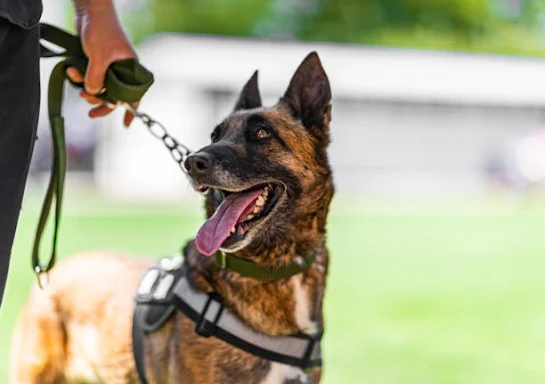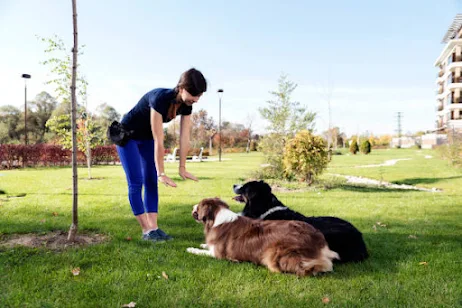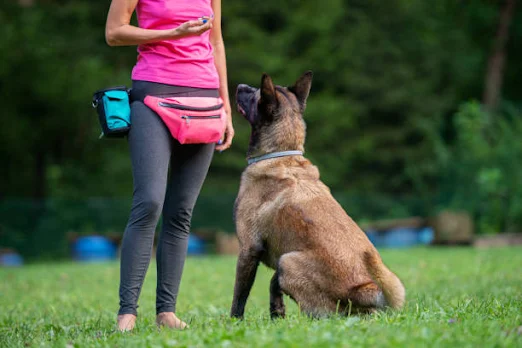How to train your dog: The most important dog training tips
Training your canine is an essential part of being a responsible pet proprietor. Not only does it help establish a strong bond between you and your furry friend, but it also ensures their safety and well- being. Whether you have a new puppy dog or an aged canine, proper training can make a significant difference in their geste and overall happiness. In this comprehensive companion, we will explore the stylish tips and ways to train your canine effectively. From introductory obedience commands to advanced tricks, we will cover it all. So, snare a treat and let's get started!
Table of Contents
1. Understanding the significance of Canine Training
2. Setting Realistic Training pretensions
3. Establishing a Positive Training Environment
4. introductory Obedience Training
- Sit Command
- Stay Command
- Come Command
- Down Command
5. Leash Training and Walking Form
6. House Training and Crate Training
7. Socialization and Behavioral Training
8. Advanced Training ways
- Tricks and Commands
- dexterity Training
- Clicker Training
9. Dealing with Common geste Problems
- Barking
- Biting
- Jumping
- Separation Anxiety
10. constantly Asked Questions( FAQ)
- How long does it take to train a canine?
- What are the stylish training treats for tykes ?
- Can you train an aged canine?
- Is professional canine training necessary?
- How do I stop my canine from pulling on the leash?
1. Understanding the significance of Canine Training
Canine training isn't just about tutoring your pet a many tricks; it's about creating a harmonious relationship grounded on trust and respect. Proper training helps your canine understand their part in the family and establishes clear boundaries. It also promotes internal stimulation, prevents geste problems, and enhances their overall well- being. By investing time and trouble into training, you're setting your canine up for a happy and fulfilling life.
2. Setting Realistic Training pretensions
Before you start training your canine, it's essential to set realistic pretensions. Every canine is unique, and the training process may vary depending on their strain, age, and disposition. Identify the specific actions you want to address and break them down into attainable way. Flash back to be patient and harmonious throughout the training process. Rome was not erected in a day, and neither is a well- trained canine.
3. Establishing a Positive Training Environment
Creating a positive training terrain is pivotal for effective canine training. Then are some tips to set the stage for success
- Choose a quiet and distraction-free area for training sessions.
- Use positive underpinning ways similar as treats, praise, and play.
- Maintain a calm and patient address during training.
- Keep training sessions short and frequent to help tedium.
- Use clear and harmonious verbal cues for commands.
4. introductory Obedience Training
introductory obedience training forms the foundation for all other training trials. tutoring your canine essential commands won't only make your life easier but also keep them safe in colorful situations. Then are four abecedarian commands to start with
Sit Command
The" sit" command is one of the first commands you should educate your canine. It helps establish control and is useful in colorful situations, similar as before crossing the road or when chatting guests. Follow these way to educate your canine to sit
1. Hold a treat close to your canine's nose, and sluggishly move your hand overhead.
2. As your canine follows the treat with their nose, their bottom will naturally lower into a sitting position.
3. Once your canine is sitting, say the word" sit" and give
Stay Command
The" stay" command is essential for keeping your canine in one place until you give them authorization to move. It's particularly useful in situations where you need your canine to remain still, similar as when opening the frontal door or during mealtime. Follow these way to educate your canine to stay
1. Ask your canine to sit or lie down.
2. Hold your hand up, win facing towards your canine, and say the word" stay" in a establishment but calm tone.
3. Take a step back and stay for a many seconds.
4. still, award them with a treat and praise, If your canine stays in place.
5. Gradationally increase the distance and duration of the" stay" command over time.
Come Command
The" come" command is pivotal for icing your canine's safety and is particularly useful in off- leash situations. tutoring your canine to come when called can help accidents and keep them out of detriment's way. Follow these way to educate your canine to come
1. Start in a quietlocation with minimum distractions.
2. Get down to your canine's position and say their name followed by the word" come" in a cheerful tone.
3. Take a many way backward, encouraging your canine to follow you.
4. When your canine reaches you, award them with a treat and praise.
5. Exercise this command in different surroundings and gradationally increase the distance between you and your canine.
Down Command
The" down" command is useful for keeping your canine calm and precluding them from jumping on people or cabinetwork. It's also a great way to educate your canine impulse control. Follow these way to educate your canine to lie down
1. Start with your canine in a sitting position.
2. Hold a treat in your unrestricted hand and place it near your canine's nose.
3. sluggishly lower your hand to the ground, allowing your canine to follow the treat.
4. As your canine's body lowers to the ground, say the word" down" and open your hand to let them have the treat.
5. Repeat this process until your canine associates the word" down" with the action.
5. Leash Training and Walking Form
Proper leash training is essential for both your canine's safety and the enjoyment of your walks together. Then are some tips for leash training and walking form
- launch by introducing your canine to the leash gradationally. Allow them to whiff and explore it before attaching it to their collar.
- Use a featherlight and comfortable leash that's applicable for your canine's size and strength.
- Exercise loose leash walking by awarding your canine for walking beside you without pulling.
- Use positive underpinning ways to encourage good geste on walks, similar as treats and praise.
- Be patient and harmonious with your training. It may take time for your canine to learn proper walking form.
6. House Training and Crate Training
House training is an essential aspect of canine power, especially for puppies. jalopy training can be a useful tool in the house training process. Then are some tips for successful house training and jalopy training
- Establish a routine for taking your canine outdoors to exclude. Take them out first thing in the morning, after refections, and before bedtime.
- Use positive underpinning, similar as treats and praise, when your canine eliminates outdoors.
- Supervise your canine nearly outdoors and watch for signs that they need to go outdoors, similar as smelling or circling.
- When using a jalopy, make sure it's the applicable size for your canine and give comfortable coverlet.
- Gradationally increase the quantum of time your canine spends in the jalopy, using positive underpinning to produce positive associations.
7. Socialization and Behavioral Training
Socialization is pivotal for icing that your canine is comfortable and well- conducted in colorful surroundings and around different people and creatures. Then are some tips for socialization and behavioral training
- Expose your canine to a wide range of gests , similar as different sounds, sights, and smells.
- Introduce your canine to new people and creatures in a controlled and positive manner.
- Use positive underpinning to award good geste during socialization.
- Address any behavioral issues instantly and seek professional help if demanded.
- Be patient and understanding with your canine as they navigate new gests .
8. Advanced Training ways
Once your canine has learned the introductory obedience commands, you can move on to more advanced training ways. These ways can give internal stimulation and challenge your canine's capacities. Then are a many exemplifications
Tricks and Commands
tutoring your canine tricks and advanced commands can be a delightful way to bond and showcase their intelligence. Some popular tricks include" roll over,"" play dead," and" shake hands." Use positive underpinning and break down the trick into lower way for easier literacy.
dexterity Training
dexterity training involves tutoring your canine to navigate through an handicap course, including jumps, coverts, and weave poles. It's a great way to ameliorate your canine's physical fitness and internal dexterity. Consider enrolling in an dexterity class or setting up your own course in the vicinity.
Clicker Training
Clicker training is a positive underpinning fashion that uses a clicker as a marker for asked geste . By associating the sound of the clicker with a price, you can effectively communicate with your canine during training sessions. Clicker training can be used for both introductory and advanced commands.
9. Dealing with Common geste Problems
Indeed the most well- trained tykes may parade geste problems from time to time. Then are some common geste problems and tips for addressing them .
Barking
inordinate barking can be a nuisance and may indicate underpinning issues similar as tedium or anxiety. To address inordinate barking, identify the triggers and deflect your canine's attention to more applicable actions. give internal and physical stimulation to keep your canine engaged and satisfied.
Chewing
Chewing is a natural geste for tykes , but it can come destructive if not duly managed. give your canine with applicable chew toys and deflect their chewing geste to those toys. insure that your canine has plenitude of exercise








